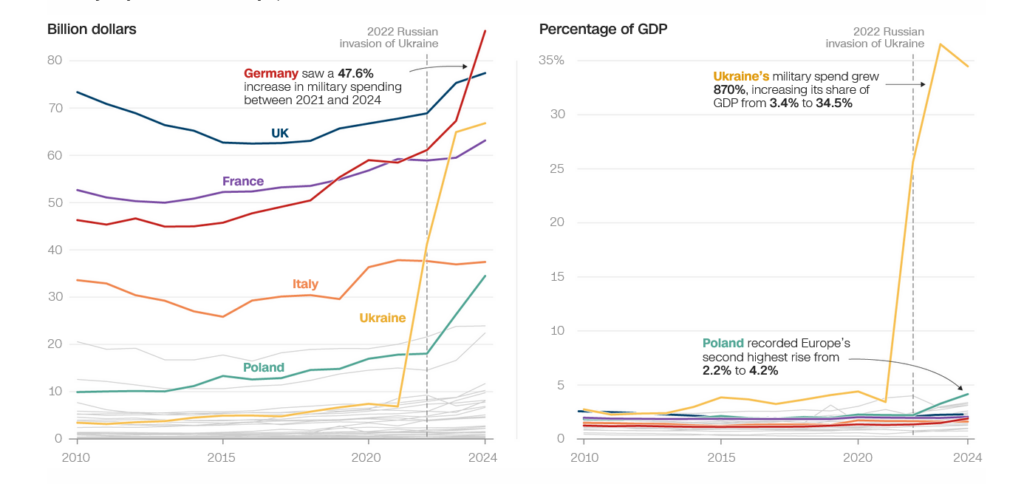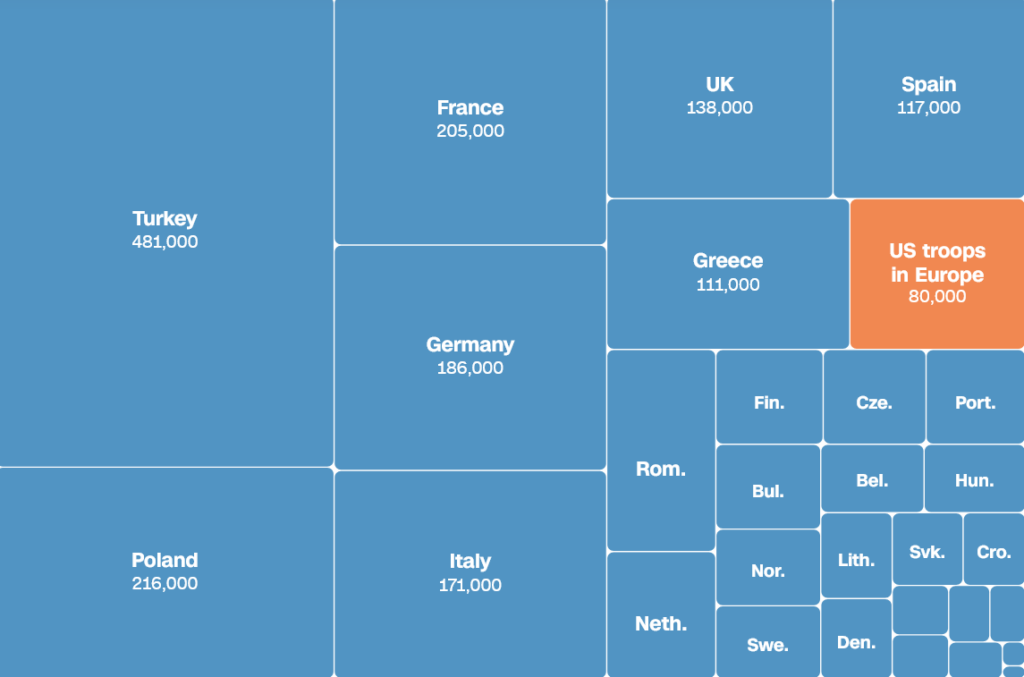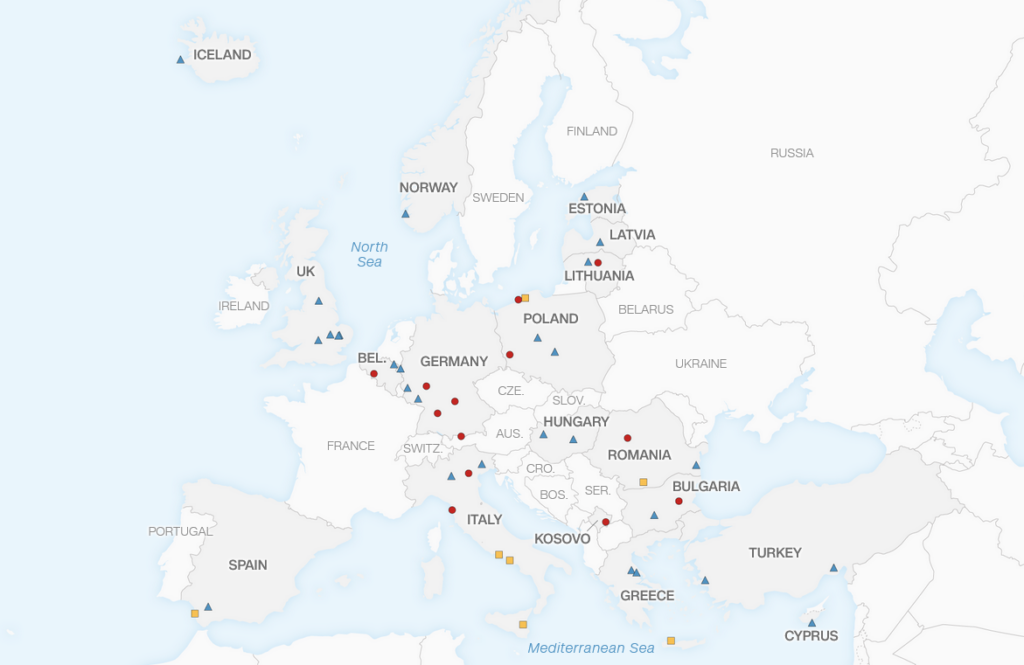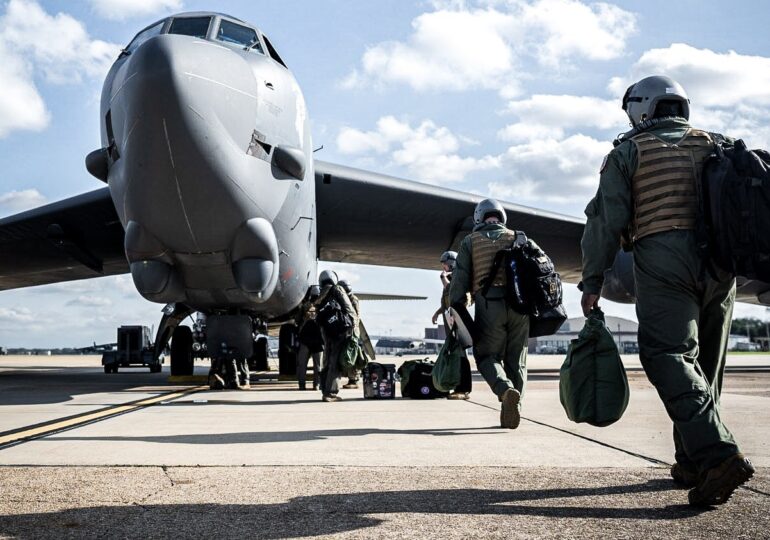The Trump administration has sent a clear message to Europe: you are on your own. But can Europe manage without America’s defense umbrella? Here’s what the numbers say.
In a dizzying three months, the White House has reversed decades of American foreign policy, committed to reducing its presence in Europe, and promised to end the war in Ukraine, even if it means ceding Ukrainian territories to Russia.
Europe is still adapting to the new reality. But just days after nearly 80 years since American and European allies forced Nazi Germany to surrender, a future in which the continent is left to defend itself against the Russian threat is no longer hypothetical, notes CNN.
"Europe has lived for 80 years in a situation where peace was taken for granted. And it seems that peace was offered for free. Now, suddenly, after the invasion of Ukraine, we realize that peace must be defended," said Roberto Cingolani, former Italian government minister, currently the CEO of the European defense giant Leonardo, during a recent visit by American TV reporters to the company's headquarters in northern Italy.
A dizzying race is underway in NATO member states in Europe to prepare the continent for a confrontation with Russia. This race can be won: Europe has armies large and expensive enough to at least partially fill the gap that Washington threatens to leave behind.
But Western European armies need a serious influx of funds and expertise to prepare for the worst-case scenario.
The data analyzed by CNN shows the status of Europe's Defense and where urgent investments are needed.
Military spending in Europe has increased in recent years
Since Russia's invasion of Ukraine in 2022, military spending in Europe has increased by 54.3%. For comparison, Ukraine's spending during the war also increased, reaching $41 billion in 2022 alone - almost as much as in the last eight years combined.
Military spending in Europe, 2010–2024

*Data displayed in dollars, at 2023 value
In recent years, the United Kingdom, France, and Germany have pumped funds into their aging armies after a stagnation in spending in the mid-2010s.
However, it may take several years for the impact of those funds to be felt on the front lines. The number of troops, equipment, and military readiness have decreased in Western Europe since the end of the Cold War. "The high level of wear and tear of the war in Ukraine has painfully exposed the current deficiencies of European countries," wrote the International Institute for Strategic Studies, a London-based think tank, in a review of Europe's forces last year.
Countries bordering Russia are moving faster. The Trump administration has hailed Poland as a model of self-sufficiency. "We see Poland as a model ally on the continent: willing to invest not only in its defense, but also in our common defense and the defense of the continent," said US Defense Secretary Pete Hegseth in Warsaw during the first European bilateral meeting of Trump's second term.
But Poland's rapid escalation of defense spending has more to do with its own longstanding tensions with Russia than with a desire to earn favor in Trump's eyes. Warsaw and Washington have been at odds over the conflict in Ukraine; Poland has been warning Europe for years about the threat posed by Russia and has staunchly supported its neighbor in defending the territory against Putin's advances, as reported by CNN.
The US has a significant military presence in Europe
In 2024, the United States had approximately 80,000 troops stationed in Europe, a military force larger than eight European countries combined, according to US Congress data. This number represented only a fraction of the US Army's 1.3 million personnel.
The deployment of US troops in Europe is much smaller than during the peak of the Cold War when almost half a million American soldiers were stationed on the continent.
Number of troops in each European country

*Romania has 67,000 military personnel
For decades, US foreign policy has emphasized the importance of these deployments not only for European security but also for its own. Troops on the continent provide advanced defense, help train allied forces, and manage nuclear arsenals.
Now, the future of these deployments is uncertain. European leaders have publicly urged Washington not to reduce the number of deployed troops, but Trump, Hegseth, and Vice President JD Vance have all made it clear their intention to strengthen the US military presence in the South China Sea.
American military forces are spread throughout Europe
There are at least 48 military bases with US military presence across Europe. 29 of these are controlled by the United States.
Most American troops are based in Germany, Poland, and Italy.

American bases in Central Europe provide a counterbalance to the Russian threat, while naval and air locations in Turkey, Greece, and Italy also support missions in the Middle East.
These points serve as "a crucial base for NATO operations, regional deterrence, and global power projection," according to the Center for European Policy Analysis, based in Washington.
Without the US, Europe has few nuclear deterrence capabilities
American nuclear weapons in Europe have been the backbone of NATO's deterrence strategy. Without them, the United Kingdom and France would be the only nuclear powers in Europe. The total of their combined arsenals is outnumbered by Russia by at least ten to one.
However, Europe's most significant deterrent factor lies in its own nuclear weapons.
European countries with nuclear weapons

European countries hosting American nuclear weapons

In the early stages of the Ukraine war, Russian President Vladimir Putin repeatedly caused global panic by suggesting the use of a nuclear weapon. This fear subsided after the war stalled in eastern Ukraine.
However, nuclear deterrence is an area where Europe heavily relies on the US. The United Kingdom and France – the two European countries with nuclear weapons – together hold only about a tenth of Russia's arsenal. In contrast, the American nuclear arsenal roughly matches that of Russia, and dozens of these American warheads are located in Europe, concludes the analysis cited.
T.D.

